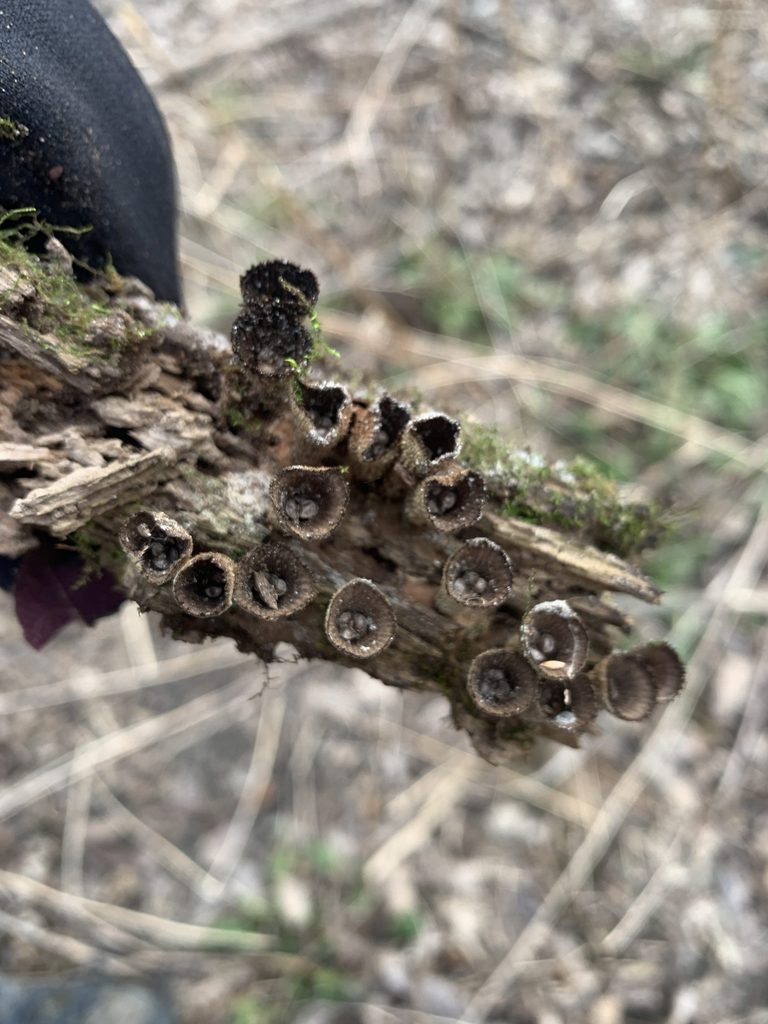There are many “ologies” in the world relating to living organisms. Entomology, ornithology, mammalogy; the list goes on. One lesser-known discipline is mycology: the study of fungi.
Fungi are a diverse group of organisms. There are 144,000 described species, with as many as 3.7 million more undiscovered. Many fungi are decomposers that feed on organic matter, oftentimes from dead organisms. As decomposers, fungi are critical to the healthy functioning of ecosystems. They recycle nutrients from dead organic matter that can then be used by other species in their environment.
The bird’s nest fungi, found in the family Nidulariaceae, are a fascinating group. A few species in this family are found in Minnesota. Bird’s Nest fungi are decomposers that live on and decompose rotting wood (per University of Florida IFAS). Bird’s Nest fungi reproduce via spores, which are tiny structures that grow into a fungus after germinating.
The reproduction of Bird’s Nest fungi is unique. They rely on rainwater to disperse their spores. The fungus is shaped like a cup and the spores sit in the cup, open to the air. When rain falls, the spores splash out of the cup and spread (see UF IFAS). One species of Bird’s Nest fungus, the Fluted Bird’s Nest fungus (Cyathus striatus), is especially abundant in the Arb. Look closely and you may be able to spot this fungus on rotting logs this spring.
Long understudied, fabulous fungi await to be seen in the Carleton Arb. Only 1 species of bird’s nest fungi and 150 fungi species in total have been reported to Northfield on iNaturalist. Can you find the next one?
–Avery Blumenthal ‘23, for the Cole Student Naturalists

Add a comment